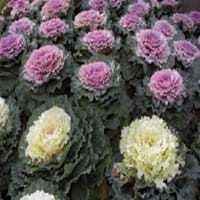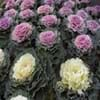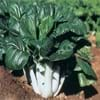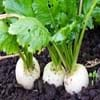Life Span
Annual
Perennial
Type
Vegetable
Bulb or Corm or Tuber
Origin
Europe, Mediterranean, Canary Islands, Northern Africa
Hybrid origin
Types
Not Available
Not Available
Habitat
gardens, Tropical regions
tropical environments
USDA Hardiness Zone
2-11
8-11
AHS Heat Zone
6-1
Not Available
Sunset Zone
A1, A2, A3, H1, H2, 1a, 1b, 2a, 2b, 3a, 3b, 4, 5, 6, 7, 8, 9, 10, 11, 12, 13, 14, 15, 16, 17, 18, 19, 20, 21, 22, 23, 24
21,22
Habit
Rosette/Stemless
Clump-Forming
Flower Color
Yellow
White, Red, Light Pink
Flower Color Modifier
Bicolor
Bicolor
Fruit Color
Brown
Green, Brown
Leaf Color in Spring
Dark Green
Green, Dark Green
Leaf Color in Summer
Light Green, Blue Green
Light Green
Leaf Color in Fall
Light Green, Blue Green, Pink
Several shades of Green
Leaf Color in Winter
Light Green, Blue Green, Gray Green, Pink
Light Green
Leaf Shape
Round
Long Linear
Plant Season
Spring, Fall, Winter
Spring, Summer, Winter
Sunlight
Full Sun, Partial Sun
Full Sun, Partial Sun
Type of Soil
Loam, Sand
Loam, Sand
The pH of Soil
Neutral, Alkaline
Acidic, Neutral
Soil Drainage
Well drained
Well drained
Bloom Time
Spring, Late Spring, Early Summer
Not Available
Tolerances
Drought
Deer resistant
Where to Plant?
Ground
Container, Ground, Pot
How to Plant?
Seedlings
Divison, From Rhizomes, Tubers
Plant Maintenance
Medium
Low
Watering Requirements
Keep the ground moist but not water-logged, Water occasionally, Water twice a day in the initial period
Average Water Needs
In Summer
Lots of watering
Lots of watering
In Spring
Moderate
Moderate
In Winter
Average Water
Average Water
Soil pH
Neutral, Alkaline
Acidic, Neutral
Soil Type
Loam, Sand
Loam, Sand
Soil Drainage Capacity
Well drained
Well drained
Sun Exposure
Full Sun, Partial Sun
Full Sun, Partial Sun
Pruning
Remove damaged leaves, Remove dead branches, Remove dead leaves
Cut or pinch the stems, Remove damaged leaves, Remove dead branches, Remove dead leaves
Fertilizers
All-Purpose Liquid Fertilizer
as it is a flowering plant, use high phosphorous content fertilizer, Nitrogen, Phosphorous, Potassium, Requires high amount of nitrogen
Pests and Diseases
Red blotch
Aphids, Grasshoppers, Mealybugs, Mites, Red blotch, Slugs, Snails
Plant Tolerance
Drought
Deer resistant
Flower Petal Number
Single
Not Available
Edible Fruit
No
Not Available
Fragrant Flower
Yes
Not Available
Foliage Texture
Bold
Medium
Foliage Sheen
Matte
Glossy
Attracts
Bees
Bees, Butterflies, Hummingbirds
Allergy
Skin irritation
poisonous if ingested
Aesthetic Uses
Showy Purposes
Beautification, Bouquets, Cottage Garden, Showy Purposes
Beauty Benefits
Not Available
Not Available
Environmental Uses
Air purification
Not Available
Medicinal Uses
Not Available
Not Available
Part of Plant Used
Whole plant
Flowers
Other Uses
Used as Ornamental plant
Used as Ornamental plant, Used for bedding in gardens
Used As Indoor Plant
No
Yes
Used As Outdoor Plant
Yes
Yes
Garden Design
Bedding Plant, Container, Edging, Edible, Herb / Vegetable, Mixed Border
Container, Cutflower, Houseplant, Mixed Border, Tropical
Botanical Name
BRASSICA oleracea 'Chidori Pink'( Acephala Group, CHIDORI SERIES)
HIPPEASTRUM 'Picotee'
Common Name
Chidori Pink Ornamental Kale, Ornamental Kale
Florist Amaryllis, Hippeastrum, Picotee Hippeastrum
In Hindi
सजावटी काले
HIPPEASTRUM
In German
Ornamental Kale
HIPPEASTRUM
In French
ornement Kale
HIPPEASTRUM
In Spanish
Ornamental Kale
Hippeastrum
In Greek
καλλωπιστικά Καλέ
Hippeastrum
In Portuguese
ornamental Kale
HIPPEASTRUM
In Polish
ozdobny
Hippeastrum
In Latin
decentius
Hippeastrum
Phylum
Magnoliophyta
Magnoliophyta
Class
Magnoliopsida
Magnoliopsida
Order
Brassicales
Asparagales
Family
Brassicaceae
Amaryllidaceae
Clade
Angiosperms, Eudicots, Rosids
Angiosperms, Monocots
Tribe
Not Available
Not Available
Subfamily
Not Available
Amaryllidoideae
Number of Species
Not Available
Season and Care of Ornamental Kale and Hippeastrum
Season and care of Ornamental Kale and Hippeastrum is important to know. While considering everything about Ornamental Kale and Hippeastrum Care, growing season is an essential factor. Ornamental Kale season is Spring, Fall and Winter and Hippeastrum season is Spring, Fall and Winter. The type of soil for Ornamental Kale is Loam, Sand and for Hippeastrum is Loam, Sand while the PH of soil for Ornamental Kale is Neutral, Alkaline and for Hippeastrum is Acidic, Neutral.
Ornamental Kale and Hippeastrum Physical Information
Ornamental Kale and Hippeastrum physical information is very important for comparison. Ornamental Kale height is 22.90 cm and width 25.40 cm whereas Hippeastrum height is 38.10 cm and width 30.10 cm. The color specification of Ornamental Kale and Hippeastrum are as follows:
Ornamental Kale flower color: Yellow
Ornamental Kale leaf color: Dark Green
Hippeastrum flower color: White, Red and Light Pink
- Hippeastrum leaf color: Green and Dark Green
Care of Ornamental Kale and Hippeastrum
Care of Ornamental Kale and Hippeastrum include pruning, fertilizers, watering etc. Ornamental Kale pruning is done Remove damaged leaves, Remove dead branches and Remove dead leaves and Hippeastrum pruning is done Cut or pinch the stems, Remove damaged leaves, Remove dead branches and Remove dead leaves. In summer Ornamental Kale needs Lots of watering and in winter, it needs Average Water. Whereas, in summer Hippeastrum needs Lots of watering and in winter, it needs Average Water.





